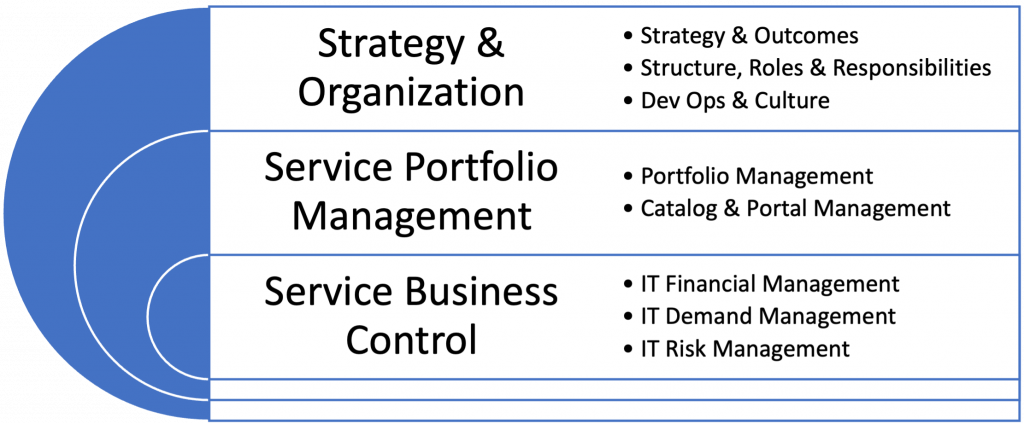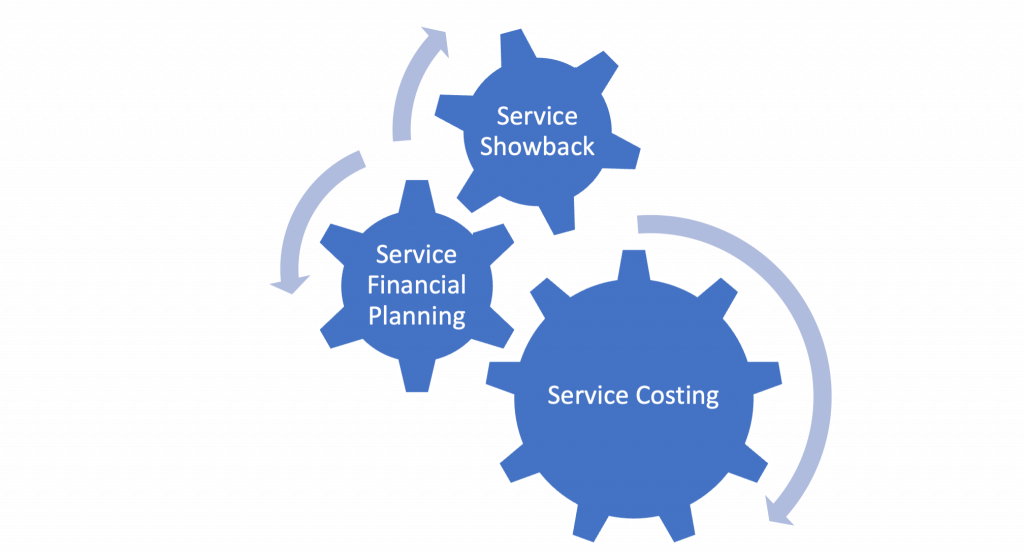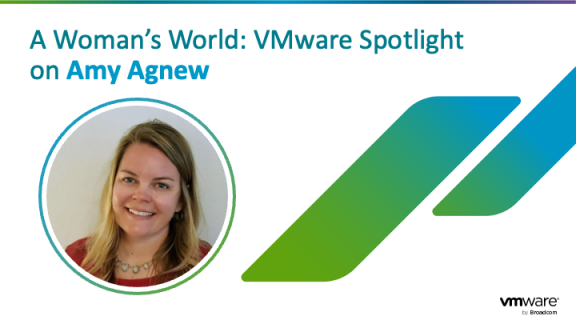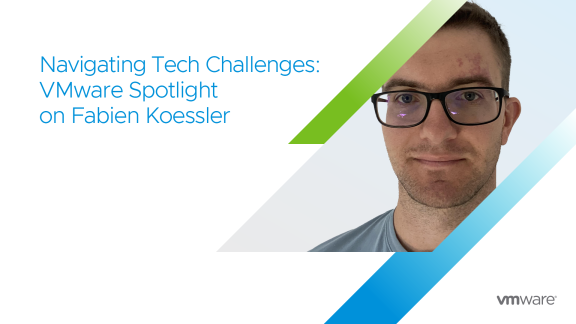As companies navigate their digital transformation journeys, CIOs must operate ahead of the business to achieve long-term success and competitive advantage. To meet business needs for the next decade and beyond requires revolutionizing infrastructure and modern solutions. These modern solutions will transform the thousands of workloads and applications to get them ready for the future.
Infrastructure and application teams deploy VMware Cloud Foundation (VCF) to manage centralized hyperconverged infrastructure and accelerate application provisioning through well-managed and orchestrated containers. The VCF solution helps companies provide consistent automated lifecycle management and secure infrastructure and operations across private and public clouds. VCF also increases enterprise agility and flexibility that enables CIOs to operate ahead of the business.
However, there’s more to digital transformation than deploying a new technology solution. Transformation requires analyzing existing skillsets and processes. For example, you need to make sure all your processes are in working order and your environments are not siloed before automating them. The diagram below shows the three key areas to consider for successful VMware VCF-IaaS transformation.

We address these three areas throughout the rest of this blog and the key elements to consider while planning for an infrastructure transformation.
Strategy & organization
Strategy & outcomes
One of the first areas to look at is how a “CloudSmart” strategy is developed. Typically, it’s based on either a business, application team or platform evolution requirement. Digital transformation initiatives require IT to respond to quickly changing needs. A simple documented strategy is key to success and ensuring every stakeholder is on the same page.
Key components should include the what, why and how they relate to the overall business outcomes. It also should cover a high-level plan (both short and long term) of how IT will centrally manage and provision workloads VCF-based IaaS environment and workload placement criteria (on-premises vs. VMC on public cloud).
The strategy should also include success criteria and KPIs related to the business outcomes. Financial considerations are critical in driving value conversations and assigning a number value to these initiatives. Financial KPIs include ROI, cost reduction or optimization, driving revenue and productivity improvement.
Structure, roles & responsibilities
A well-defined organizational structure and roles and responsibilities will drive effective strategy execution and help achieve business outcomes. Digital transformation leaders must understand their organization’s current organizational structure and staff. More specifically, leaders should be familiar with their shadow IT across its affiliates and the soft skills and technical skills gaps that will need filling to succeed in the overall execution plan.
Digital transformation leaders should investigate the following:
- The VCF-based IaaS business users, i.e., direct business users or business services and application owners who will run their services in the new environment
- The process to transform the old operating model/team into one that supports business outcomes
- The location of the current and future IaaS operations team
One role that’s key to every VCF transformation is the site reliability engineer (SRE). SREs are the owners of the services delivered in conjunction with engineering teams. In other words, SREs create the services that run on the VCF infrastructure. With Anything as a Service (XaaS), SREs own out-of-the-box services that are consumer-visible. These services are the basis of the foundational IaaS layer. Examples include Compute as a Service, Container as a Service (CaaS), and the foundation services, such as file, block, object, LB, DNS, Auth, register, etc. SREs partner with core engineering teams to develop optimized services for at-scale clusters.
Finally, when evaluating the structure, roles and responsibilities of your organization, consider the overall culture surrounding innovation, change, IT and cloud. When mobilizing for the future, you have to make sure your teams are in with both feet. The whitepaper “Organizing for the Cloud” is a great resource for business leaders preparing their teams for a digital transformation.
Dev Ops & culture
An organization has several application development and operations teams distributed between central IT and its affiliate shadow IT. Dev teams typically develop and enhance applications and then pass those apps to infrastructure and ops. DevOps is a practice that combines software development and operations lifecycles to ensure optimum delivery lifecycles and continuous delivery.
Effectively applying DevOps requires breaking down the walls between these teams. Adopt the “develop with operations in mind” mindset. It’s fundamental to understand how well the App Team is informed about the VCF-based IaaS transformation initiative and the degree of impact. Your organization’s roles and responsibilities chart (RACI) should be updated to reflect cross-collaboration responsibilities between the app, infrastructure and operations teams.
Service portfolio management
A common misperception is that service portfolio and service catalog are the same things; they’re completely different. A service portfolio is a list of all the services an IT organization has ever run, is currently running, or will run in the future. This list includes all the attributes related to service definition, category, dependencies, teams, tools, cost, consumption and consumers. A service catalog is only a subset of currently active services that users (or consumers) can order out of the catalog. The service portfolio gives an insight into how an organization grew throughout the years and communicates the future vision of the planned services and products.
Portfolio management
VMware recommends creating a simple service portfolio to include the basic attributes for the services offered by IT to the rest of the company. Then, adopt an iterative approach to get to a mature stage in service portfolio and catalog management practices. IT can initially focus on 20% of services that deliver 80% of its capabilities including the VCF-based IaaS services. Additionally, IT can develop a simple service portfolio management policy and process along with clear roles and responsibilities. The initial effort should also include documented service definitions and offerings representing a central repository for services information and use across the organization.
Catalog & portal management
Traditionally, a service catalog used to be a list of services and a static catalog for exploring and awareness purposes. However, the future may require interactive catalogs. Organizations can offer interactive catalogs as a new capability that enables users to navigate IT services, order, provision and consume using a combination of tools to support the order-to-consume cycle. For a new VCF-based IaaS environment, vRealize Automation delivers a configurable portal and policies that allow IaaS admins to define various service offerings, tiers and blueprints. It also enables IaaS consumers (e.g., other service/application owners) to order and consume.
Catalog and portal management also requires integration and tooling for the following:
- Automated provisioning
- Pricing
- Financial management and billing
- Support and ticketing systems
- Consumption
- SLA performance measurement
- Change/configuration management tools
Another equally important consideration is formally documenting the service catalog (and portfolio) management processes along with the definitions of the roles to ensure it’s a repeatable, consistent and measurable practice.
Service business control
IT financial management
IT teams sometimes carry the perception that they’re expensive to run. Often, business affiliates overpay for public cloud resources within their own shadow IT practices. IT financial management is key to ensuring projects are financially viable. The key roles involved in IT financial management are IT Finance Manager, Service/Application Owner, Cloud Business Manager and Customer Relationship Manager. Here are the top areas these professionals need to consider:

Service costing
IT teams traditionally communicated their IT financial reports to CxOs, showing the total, functional and categorial breakdown of their IT OpEx, CapEx and budget variance. These financial reports actually aren’t very useful benchmarks to business units. Going forward, IT financial reports should focus on services and summarize what business units consume along with their cost. These details enable value-based conversations and influence consumption behavior. Every service must be defined and priced out end to end to report on its total cost of ownership (TCO) along with unit cost and consumption-based allocation to business units.
For example, the VCF-based IaaS service owner envisions that IaaS will be the center of all infrastructure resource provisioning, including compute, storage and network resources. Therefore, the service owner needs to structure and document the service and its service offers in the service catalog for the other service and application owners to consume. Automating the resource lifecycle management, including tagging all resources to the appropriate services and applications, is a focus during this transformational effort. Automation will lead to easier cost allocation based on IaaS units consumed. Also, having an automated metering capability to capture license consumption is helpful to stay on budget and ensure compliance.
Service financial planning (budgeting & forecasting)
IT often follows the bottom-up budgeting practice, so your team may be new to IT forecasting. One transformational improvement CIOs should consider is service-based budgeting (SBB). SBB requires a service and consumption-based cost model. This ensures a top-down approach of budgeting and forecasting by demand. In practice, the IaaS service owner asks consumers (i.e., other service and application owners) to budget and forecast based on their demand considering known consumption levels and unit costs. This limits conversations to be strictly about value and enable scale up/down conversations based on demand.
Service showback & chargeback
Showback (at minimum) is an effective communication technique to demonstrate value to the business and highlight the business’ consumption and costs related to IT services. While it’s great to showback business units consumption of the VCF-based IaaS compute, storage, and network services, it’s even more effective and valuable to communicate this indirectly through the business services and applications hosted on IaaS as they are more relevant. Chargeback is the next level of maturity that involves actual financial cross-charging transactions between IT and the rest of business units.
IT demand management
Demand management rarely gets enough attention. Some organizations may practice demand management, but may not have formal processes in place to make it documented, repeatable and measurable. Formal demand management starts with visibility into the consumption and cost of used resources.
For example, an IaaS service owner provides cost and usage transparency to other service and application owners or business unit owners. The owners can plan and communicate their forecast and usage demand, which will feed seamlessly into service budgeting, forecasting and capacity management, IT supplier management and risk management processes. The IaaS service owner can request all service, application and business unit owners to communicate their IaaS usage demand based on their needs. This input will translate into cost forecasting and possible additional compute, storage or network resource capacity. Finally, these details are important to risk management to mitigate any identified risks, such as service interruption due to lack of capacity or overage consumption and cost.
IT risk management
A formal IT risk management process is integral to an organization’s success. The IaaS service owner is responsible for documenting and monitoring risks throughout the plan, build and run phases of the service lifecycle. This includes areas such as data security, access control, availability, reliability, business and technical standards compliance and regulatory requirements. Risks for the various VCF-based IaaS components (compute, storage and network) must be documented, continually assessed, communicated and mitigated. These processes are completed most effectively when risk management clearly defines roles and responsibilities.
Ensure a solid foundation for your digital transformation
Embarking on an infrastructure/cloud transformation initiative requires a comprehensive plan for all three strategic operating areas. A solid foundation will set up your organization for a successful VCF-based IaaS transformation effort to realize the desired IT and business outcomes.






